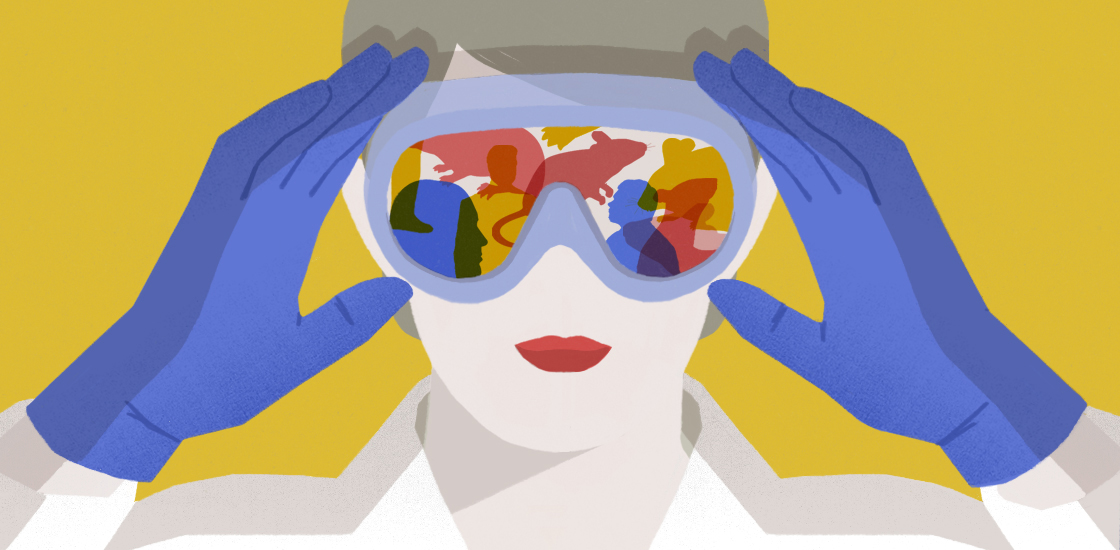THIS ARTICLE IS MORE THAN FIVE YEARS OLD
This article is more than five years old. Autism research — and science in general — is constantly evolving, so older articles may contain information or theories that have been reevaluated since their original publication date.

Autism scientists are well aware of the importance of translational research — work that translates basic findings in animal models into treatments for people.
Unfortunately, potential autism treatments that work well in animals often do not work when tested in people. For researchers desperate to find solutions, these failures are extremely disappointing. Failed clinical trials can also spark doubt in the public and in funding agencies, potentially affecting future research.
Take, for example, the experimental drug arbaclofen. In 1991, researchers identified an abnormal expansion of FMR1, the gene mutated in fragile X syndrome1. They then created a mouse model that expresses the mutated protein and found a drug that corrects the abnormal features of neurons and autism-like behaviors in the mice2. But when scientists tested the drug in people with fragile X syndrome, it did not diminish their autism features3.
This and similar failures in clinical trials leave scientists to wonder what went wrong: Did they identify the wrong gene? Do the genes not have the same function in animals and people? Are the animal behaviors irrelevant to those in people? Are the outcome measures in clinical trials unrealistic? Or all of the above?
Team-based, multidisciplinary translational research could answer these questions and ultimately end the string of failures. But the current funding mechanisms obstruct researchers from taking this approach.
Medical research typically moves in a linear fashion. It starts with a gene discovery, which leads to the development of animal models and then to the identification of a possible drug. Then the drug enters a clinical trial involving individuals with the given condition. But in autism, these trials, almost without exception, have failed to show the treatment effects seen in animals.
So, increasingly, researchers are recognizing the inadequacy of this linear model, in which one type of science follows another. To understand the causes of autism and develop treatments, we must integrate basic biology with clinical research. We need team science.
Big-ticket science:
Ideally, clinicians, cognitive neuroscientists, geneticists, neurobiologists and experts in animal behavior would work collaboratively. They would develop biomarkers and behavioral assays common to animals and people. Each step of the way, they would inform one another, test hypotheses, and identify realistic outcome measures.
But team science is expensive. And so, despite the urgent need, the National Institutes of Health (NIH) — which funds most autism research — has invested little in it. The average basic NIH research grant provides $500,000 per year — not enough to fund a complete translational research team.
Historically, the NIH has supported larger team science via three mechanisms: the program project grant, the center core grant and the specialized center grant. The program project grants allow collaborating investigators to work on multiple complementary projects, with a budget of up to $1.5 million — just enough to support three or four multidisciplinary teams.
But most NIH institutes have curtailed or eliminated program project grants. Three of these institutes sponsor the bulk of autism research: the National Institute of Mental Health (NIMH), the National Institute of Child Health and Human Development (NICHD) and the National Institute of Neurological Disorders and Stroke (NINDS).
In 2003, the NIMH announced it would no longer accept unsolicited applications, and the NICHD followed suit in 2016. Only NINDS continues to support these grants, but limits proposals to those concerning neurological disorders. None of the currently funded NINDS program project grants focus on autism.
The center grant also offers opportunities for team science. All of the projects funded by a center grant must have the same hypothesis, studied in different ways. One NIMH center program, the Silvio O. Conte Centers for Basic Neuroscience or Translational Mental Health Research, is ideal. It is a team-based initiative geared toward high-risk science that integrates work at the cellular, animal and human levels. But only a few of these grants are awarded each year. Of the 12 currently funded centers, only 3 are doing translational research and only 1 is using a bidirectional approach, in which the researchers interact and inform one another’s work. None of these centers are focused on autism.
The NIH Autism Centers of Excellence program funds the only large-scale autism studies. Last year, the NIH awarded nine grants for nearly $100 million, but none of these focus on translational research, and only one has any animal or basic-science component. In addition, the number of centers funded by this program or its predecessors has declined to only five centers and four networks, from a dozen centers a decade ago.
This dearth of funding hobbles our ability to do what we can truly call translational science in autism.
Restrictive rules:
The narrow definition of each NIH institute’s mission forms a second barrier to funding translational research.
Last year, I inquired about how each institute would respond to a team-science application that examines children with idiopathic autism and autism syndromes, including fragile X, and that also looks at animal models of the same syndromes, a basic translational approach.
None of the institutes would consider reviewing such an application. The NIMH would not accept an application that included people with fragile X because “that belongs in NINDS.” And NINDS would not accept an application that included a study of children with idiopathic autism because, as one NIH official stated, “that belongs in NICHD or NIMH.”
Both institutes have a mission to contribute to autism research. But their respective ‘rules’ are too restrictive for integrative research.
A third barrier lies with review panels. Review panels are rarely well-versed in both human and animal research, and few individual reviewers are sufficiently knowledgeable about or open to cross-species work.
A review committee I attended in the past year received a few applications with both human and animal components — and they were not well received. The clinical researchers did not appreciate the animal work, and the animal researchers were too critical of the human research.
This outlook sets the stage for failure. We need a new approach to review the merits of translational research proposals, where the appropriate experts review only those components they know well.
Not long ago, I inquired about how many of the currently funded autism grants include cross-species, collaborative work. The NIH program managers with whom I spoke could not think of any in their institute’s research portfolios, and a search of the NIH’s database of grants confirmed this.
Without intending to, the NIH has precluded exactly the kind of translational research we know is essential if we are to make progress in treating autism. With the paucity of federal funding for team-based translational research, we desperately need private foundations to fill this gap.
Autism research must be more interactive and include scientists working at every level of analysis, from cells to people. Scientists must work together if we are to truly make a difference in the lives of individuals with autism and other developmental conditions.
Susan Bookheimer is Joaquin Fuster Professor of Cognitive Neuroscience at the University of California, Los Angeles.

By joining the discussion, you agree to our privacy policy.